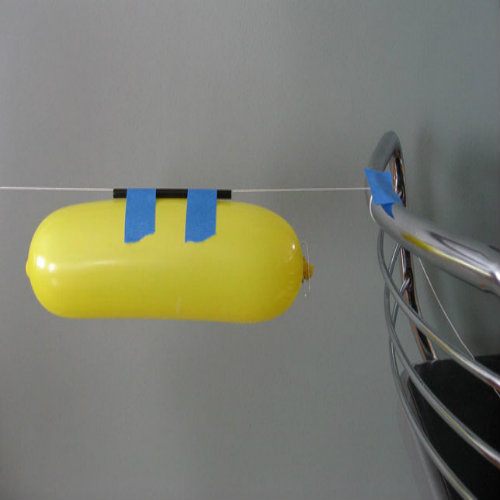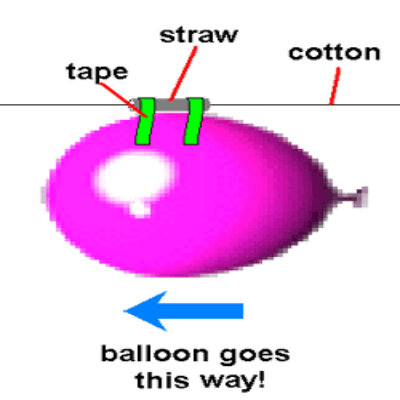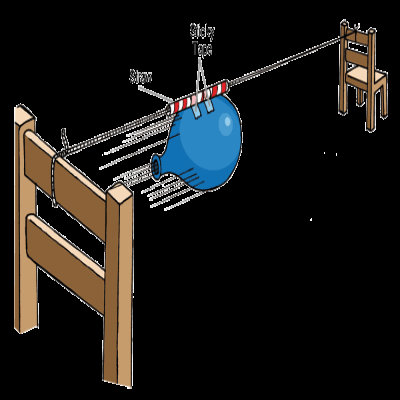How to Make a Rocket Balloon

If you blow air into a balloon and release it, it will go flying like a rocket. The flight of the balloon is due to air which escapes through it. According to Newton’s third law of motion, “to every action there is an equal opposite reaction,” – this is exemplified when air moves out in one direction from the balloon, it flies in the opposite direction. This simple experiment can be performed to make a meaningful Science project and students looking for such ideas can use it to show the conclusion of this experiment; which is, that the distance traveled by a balloon depends on the volume of air it contains. For this reason, the experiment may be termed as a Rocket Balloon experiment. You will require the following things before doing the experiment;
Things Needed
– String or fishing wire
– Regular cold drink Straws (1 or 2)
– 1 balloon
– Scotch Tape
– Scissor
Instructions
-
1
Getting Started
Pass the string through a hallowplastic straw. -
2
Tying string with Supports
After that, tie one end of the string with a chair or some support, and the other end to another support in a way that the string seems like a bridge between the two objects. -
3
Filling the Balloon
Blow the balloon with air and once it is full, pinch the neck firmly between your thumb and finger to stop the air in it. You can tie the neck with a piece of string but not very tightly.

-
4
Fixing the balloon with string
Now attach the balloon with the straw such that it is parallel to the string. -
5
Releasing the Balloon
Now release the neck of balloon. You will notice that as the air blows out of the balloon, it moves along the straw in a straight motion like a rocket. As you try the same procedure with balloons of different sizes and strings cut at different lengths, you can prove that the distance traveled by a balloon depends on the volume of air it contains. Hence, the more air a balloon will have, the greater distance it will travel. And it will always move in the opposite direction of where the air is blowing out.





